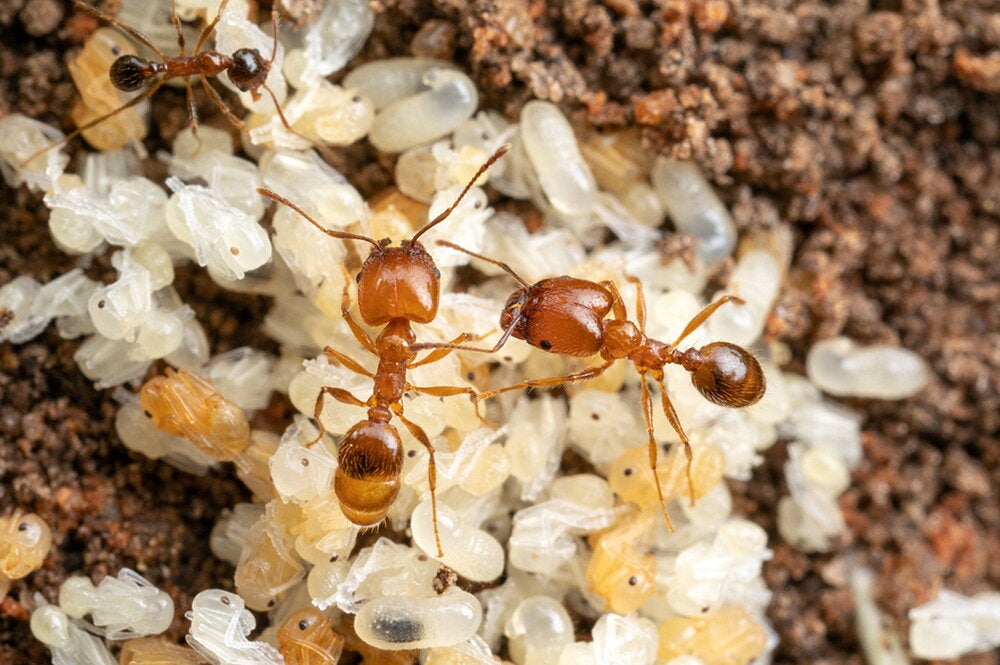

If any ant could be said to have a Napoleon complex, it is the Argentine ant. These tiny, aggressive ants have a ferocious ability to conquer vast territories, devouring the larger native ants in their path.
But they don't stop there.
In a study in Rice Canyon in southern California, University of Illinois entomologists recently discovered that once the Argentine ants displaced the native ant species, they began foraging lower on the food chain, radically changing the ecology of their new home.
The impact on the native ants was disastrous, says LAS entomologist Andrew Suarez, principal investigator in the new study. Over a period of eight years, his team observed that the number of native ant species in the area went from 23 to two.
In addition to being small and aggressive, the Argentine ants are adaptable, a trait that has made it possible for them to flourish all around the world. Suarez says they were once found only in South America, but they have since spread to Asia, Australia, Europe, North America, and South Africa, most likely hitching rides with agricultural products.

The Argentine ant, Linepithema humile, is highly social and sometimes forms immense super-colonies made up of millions of workers spread over large territories. In previous research, Suarez identified a super-colony in California that stretched from San Diego to San Francisco.
For the new study, Suarez's team followed the invasion wave of the Argentine ant in Rice Valley in real time for eight years. Using a technique known as stable isotope analysis to determine what the ants were eating, researchers discovered that in the early stages of the invasion the Argentine ants were carnivores, aggressively attacking and probably eating most of the other ants they encountered. But as they displaced the native species, their food habits changed.
In particular, researchers showed that the Argentine ants were taking over an important food source—the honeydew excretions of aphids and scale insects that feed on plants.
"These are really important, often fixed resources, from which ants can get a huge amount of their carbohydrate fuel, the energy to fuel their worker force," Suarez says. "As the native ants are displaced, the Argentine ants start monopolizing these resources."
According to Suarez, the findings point to a need for similar long-term studies of native and non-native species, rather than the more common, short-term studies, which see only a fragment of the bigger puzzle. Only by following an invasion over time can researchers begin to understand the dynamics that allow alien species to conquer the natives.
"The way the invasive species are interacting with the environment might actually be changing over time," he says.


